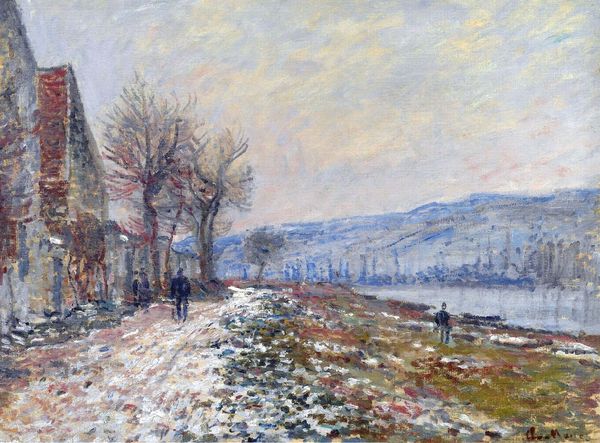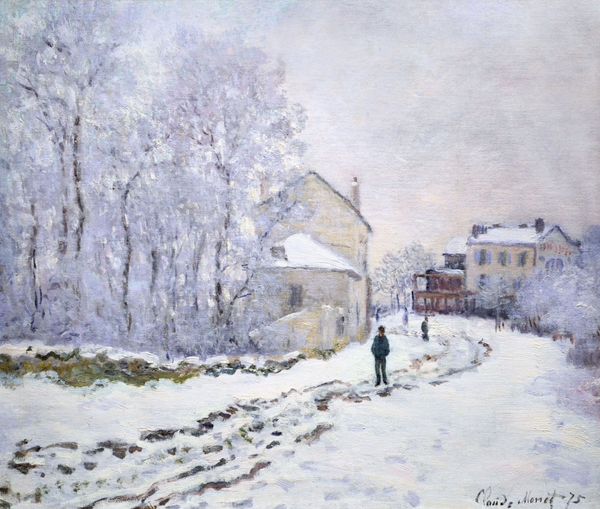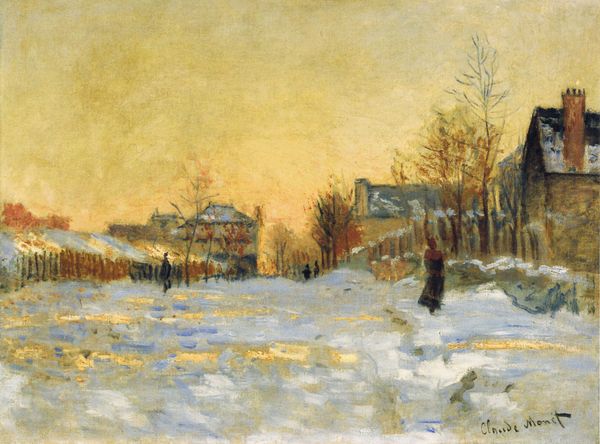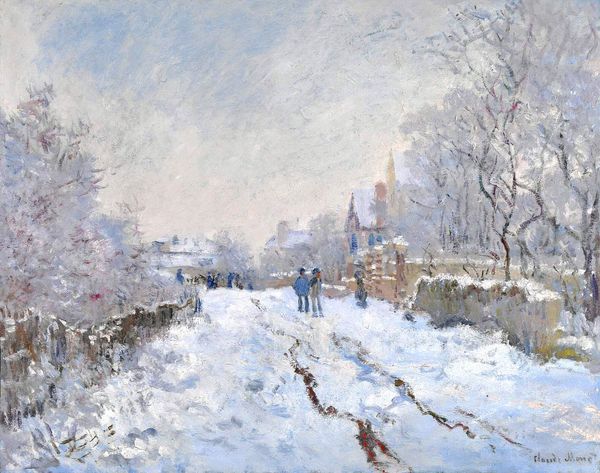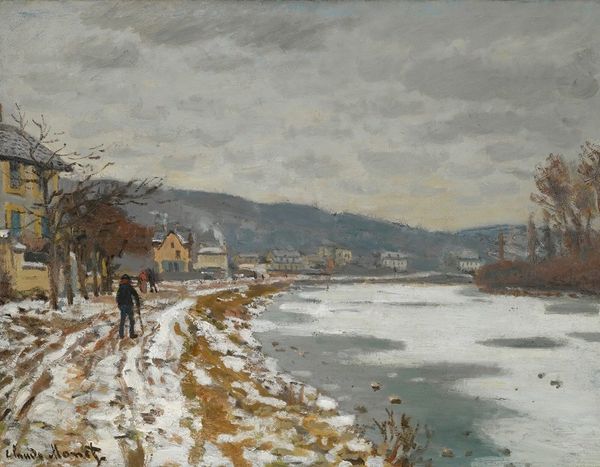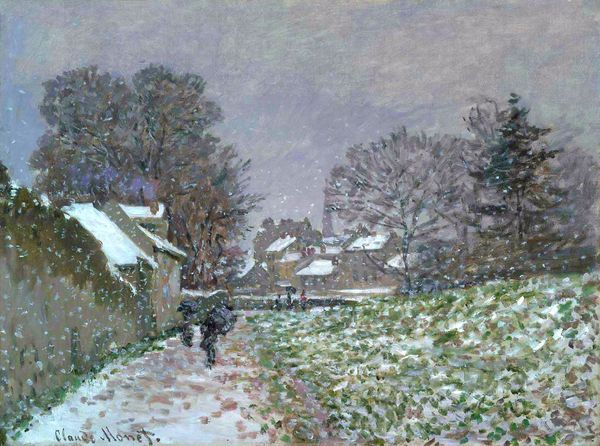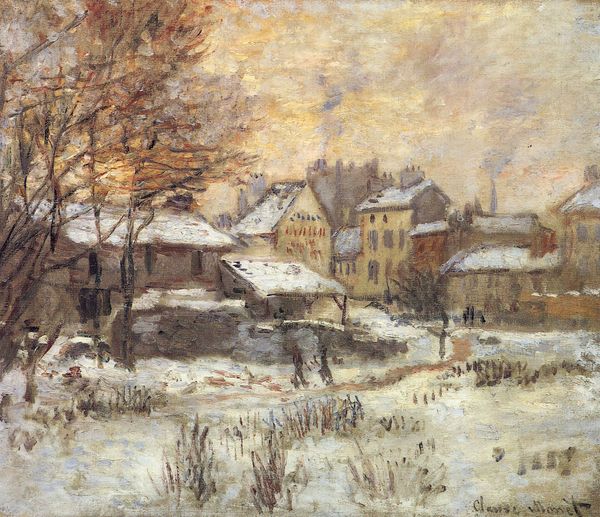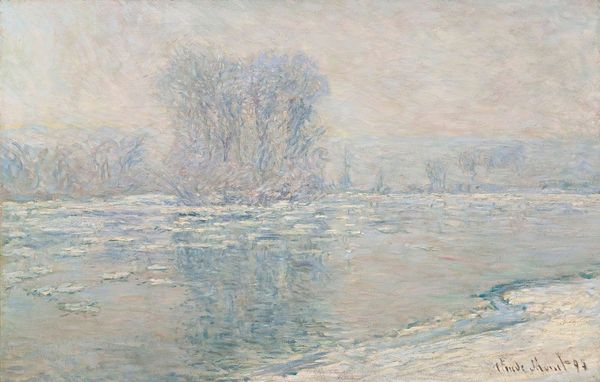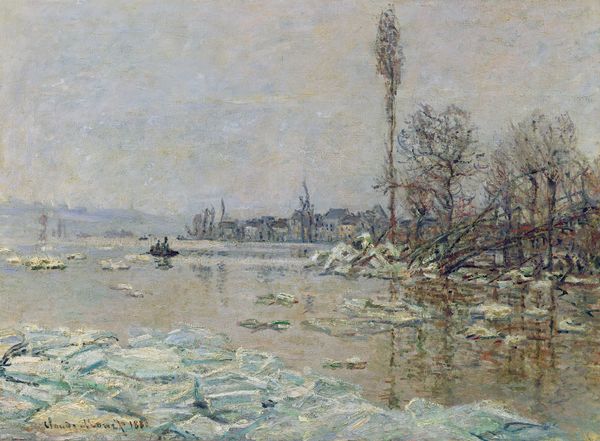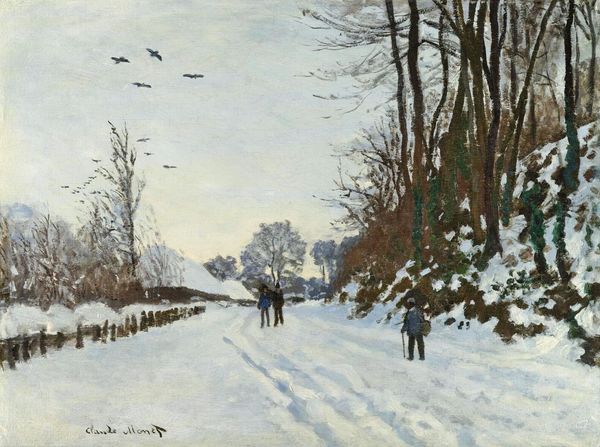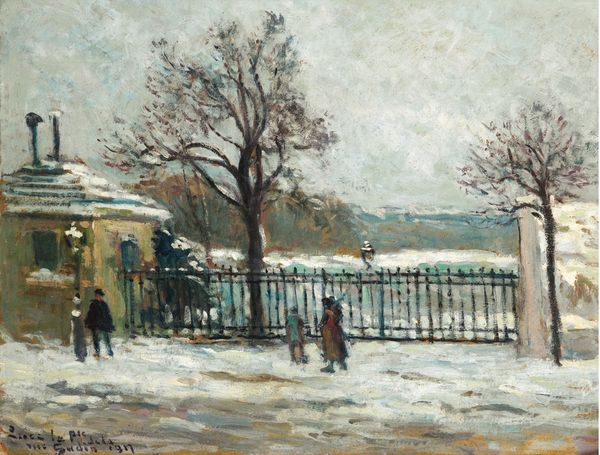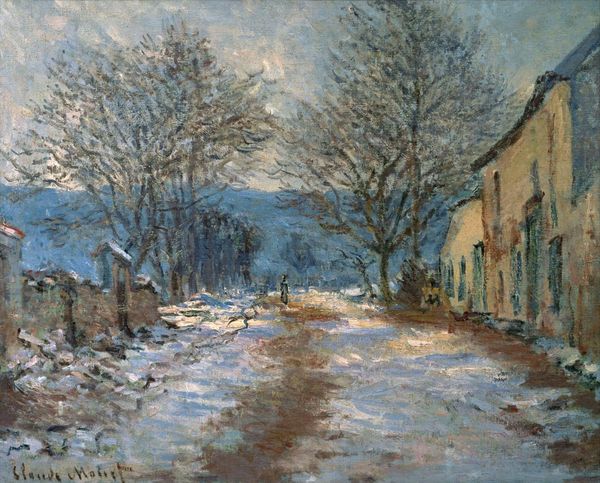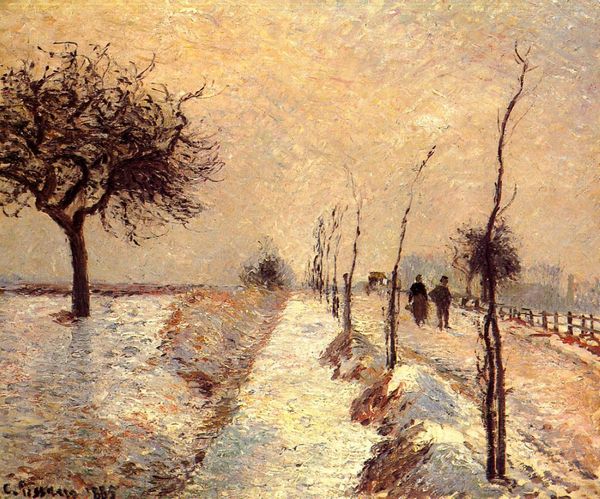
painting, plein-air, oil-paint
#
painting
#
impressionism
#
plein-air
#
oil-paint
#
landscape
#
impressionist landscape
#
nature
#
oil painting
Copyright: Public domain
Curator: There's a particular quietude in this painting, isn't there? It’s like the world has been hushed. Editor: Indeed. We are observing Claude Monet’s “The Tow Path at Argenteuil, Winter,” painted in 1875. It's an oil on canvas, portraying a desolate winter landscape. But the silence…I find it unsettling. Curator: Unsettling, perhaps because it's not just about the pretty snow. See how Monet uses these short, broken brushstrokes to build up the texture of the snow and the earth? He's not just depicting a scene; he's almost building a tangible world. It feels like you could reach out and feel the damp chill. Editor: Yes, but consider the socio-economic context of Argenteuil during this period. While Monet captures the aesthetic beauty, these towpaths were vital for commerce. The stillness perhaps alludes to disrupted livelihoods due to weather and class division – a landscape of labor made temporarily still, reflecting an enforced pause on the working class. Curator: Ah, always the layers. I do find myself wondering what the solitary figure there is thinking. The little touches of red, the little greens fighting to be seen! Editor: Absolutely, that figure isolated by the wintery scene may evoke feelings of isolation – feelings very palpable across society at this time, and particularly felt by those marginalized or working on such pathways, always a marginal and potentially dangerous occupation. Curator: Still, there is this pervasive luminosity. The sky is overcast, but light still seems to glow from within the painting itself. Even in what might be considered drab colours, he manages to make it almost shimmery. Editor: True, and consider how such beauty then becomes something deeply political as Monet provides the view for bourgeois consumption. We must not sanitize this work through the mere aesthetic – and its politics of display must remain central. Curator: Well, whether one looks at the social commentary or the impressionistic rendering of light, it seems this work makes an indelible impression. Editor: It asks questions; and it resonates with critical perspectives needed when encountering works produced by such famous figures and sought by powerful galleries. It’s about acknowledging beauty and questioning simultaneously.
Comments
No comments
Be the first to comment and join the conversation on the ultimate creative platform.
